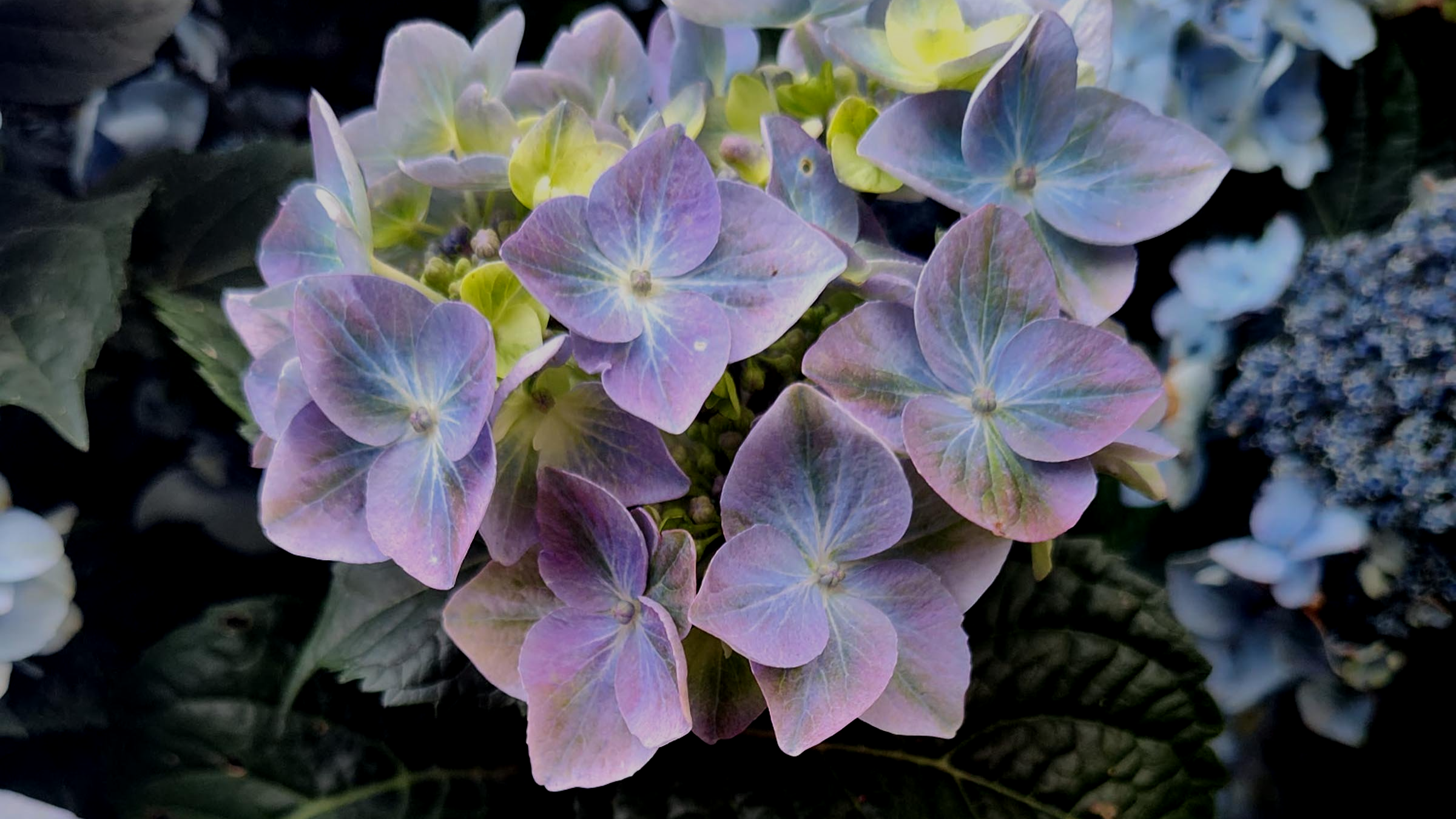There is absolutely no reason to be buying blueberries from the store (at least not in July and August) when we can grow our own almost effortlessly. There is no need for special care, like trellising or complicated pruning. No worries about when to spray for bugs and diseases, like scab or mildew or codling moths and apple maggots. In fact, about all we have to do with blueberries is plant them in a sunny location, give them some compost, an acidic type fertilizer and average moisture, then just sit back and enjoy them. It’s that simple.
In addition to all those yummy berries and their health benefits, blueberry plants also make fantastic landscape plants. Most traditional varieties grow to about 5 to 6 feet tall and have intense fall color. Many of the newer introductions stay in the 3 to 4-foot range, and now there are even a few that are trailing and are suitable for baskets or hanging over the edge of a rockery. Many are also evergreen with wonderful winter foliage. Whether we plant blueberries in a designated “edible garden space” or incorporate them into our landscapes, there is a variety (or several for that matter) that should work well in our yards. Now is the time to select and plant them.
To my astonishment, I discovered that here at the nursery we offer 30 different varieties of blueberries (although not all of them are necessarily in stock at the same time). The hardest thing about growing blueberries may be making a decision as to which ones to plant. Our website has very good descriptions which include ripening times, growth habits, and other distinguishing characteristics. Here are a few that caught my eye…
Bonus: This is a high-bush variety that is deciduous and should grow to about 5 to 6 feet tall. It was introduced in 1978 from Michigan State University and is now planted all over the world. Its claim to fame is that it has the highest known yield per plant. Plan for a very large crop with this variety. It needs a pollinator.
Blueberry Buckle: This is a compact variety with smallish berries that are very tasty. It comes from the Bushel and Berry collection, is evergreen, and works well in tight spaces or even containers. If you are thinking of a planting a boxwood hedge, consider Blueberry Buckle as an alternative. It will have a similar growth habit with the bonus of edible fruit. It is self-fertile.
Midnight Cascade and Sapphire Cascade: These new offerings from Bushel and Berry are trailing varieties that only grow 18 to 24 inches tall, have lovely evergreen foliage and tasty aromatic fruit with a hint of vanilla. You can try them in a container as long as it is of reasonable size so they don’t easily dry out. They are both self-fertile.
Mini Blues: If you prefer smaller berries for pancakes or muffins then Mini Blues is the perfect variety for you. Don’t get confused though, smaller berries are not smaller on taste. Plants will grow 5 to 6 feet tall and are deciduous. It needs a pollinator.
Pink Popcorn: This is a novelty high-bush variety with berries that have a creamy to pink skin, perfect for entertaining (just ask Martha Stewart). They of course taste just like any other blueberry when you pop them in your mouth. Plants grow 4 to 5 feet tall, are deciduous and claim to be self-fertile.
Vaccinium angustifolium: This is a low-growing, small east coast native deciduous shrub that stays around one foot tall. While most high-bush blueberries are the ones you see in the stores for fresh eating, low-bush blueberries are smaller and sweeter and are therefore used often in jams and jellies. Considering that you will have to be on your hands and knees to harvest this variety, I am thinking that this would be a good one to plant for the birds. You get better fruit production with multiple plants.
Silver Dollar: Now this one really intrigues me. Again, this is a Bushel and Berry introduction which they describe as follows: “sports sweet, pineapple flavored fruit and foliage resembling Eucalyptus! White flowers in the spring lead to a summer crop of large blueberries. Foliage will have hints of silver throughout the spring and early summer before turning into emerald green in the fall.” This should be a winner for those going for an “edible landscape”. It is self-fertile.
As you can see, there are many choices for blueberries. February is an excellent month to start looking around and picking a few out. They really are very easy to grow and of course yummy to eat, and not to mention a beautiful addition to the landscape. Shop early for the best selection. Stay safe and keep on gardening!


